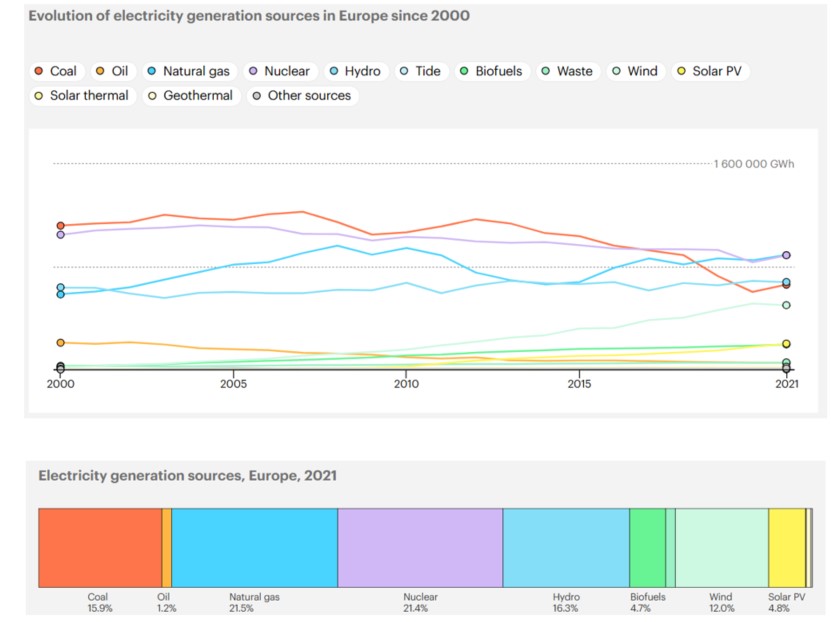- Definition and Types of Energy
- Myths And Misconceptions About Energy
- The Relationship Between Energy and Environment
- Climate Change and Carbon Footprint
- Greenhouse Gas Effect
- The Role of Human-Induced Greenhouse Gases and Energy Consumption
- Energy Efficiency and Sustainability
- Renewable Energy Sources and Future Perspectives
- Play and Learn
- Solar Energy Conversions
- Solar Energy Worldwide
- Solar Energy in Partner Countries
- Positive and Negative Impacts
- Technologies for Harnessing Solar Energy
- Solar thermal energy technologies and applications
- Electricity Generation Methods
- Passive Heating and Cooling of Residences with the Sun
- Concentrator solar power (CSP) systems and electricity generation
- Systems and Applications That Generate Electricity directly from solar rays
- Photovoltaic Cells and Panels
- Domestic PV Systems
- Off-Grid PV Systems
- Hybrid Connected Systems
- Materials Used in PV Cells
- Play and Learn
Renewable Energy Use in Europe
Europe is one of the leading regions in the use of renewable energy sources. The European Union aims to source 32% of its energy consumption from renewable resources by 2030. Countries such as Germany, Denmark, and Spain are global leaders in investments in wind and solar energy. The positive impacts of renewable energy on the environment, climate, economy, and sustainability are driving the increased adoption of these energy sources. In 2022, renewable energy sources accounted for 41.2% of gross electricity consumption in the EU, an increase of 3.4 percentage points from 2021, and significantly ahead of other electricity generation sources such as nuclear (less than 22%), gas (less than 20%), or coal (less than 17%). Overall, the share of renewable energy sources increased by 5.7% from 2021 to 2022. Wind and hydroelectric power together constituted more than two-thirds of the total electricity generated from renewable sources (37.5% and 29.9%, respectively). The remaining third came from solar energy (18.2%), solid biofuels (6.9%), and other renewable sources (7.5%).
